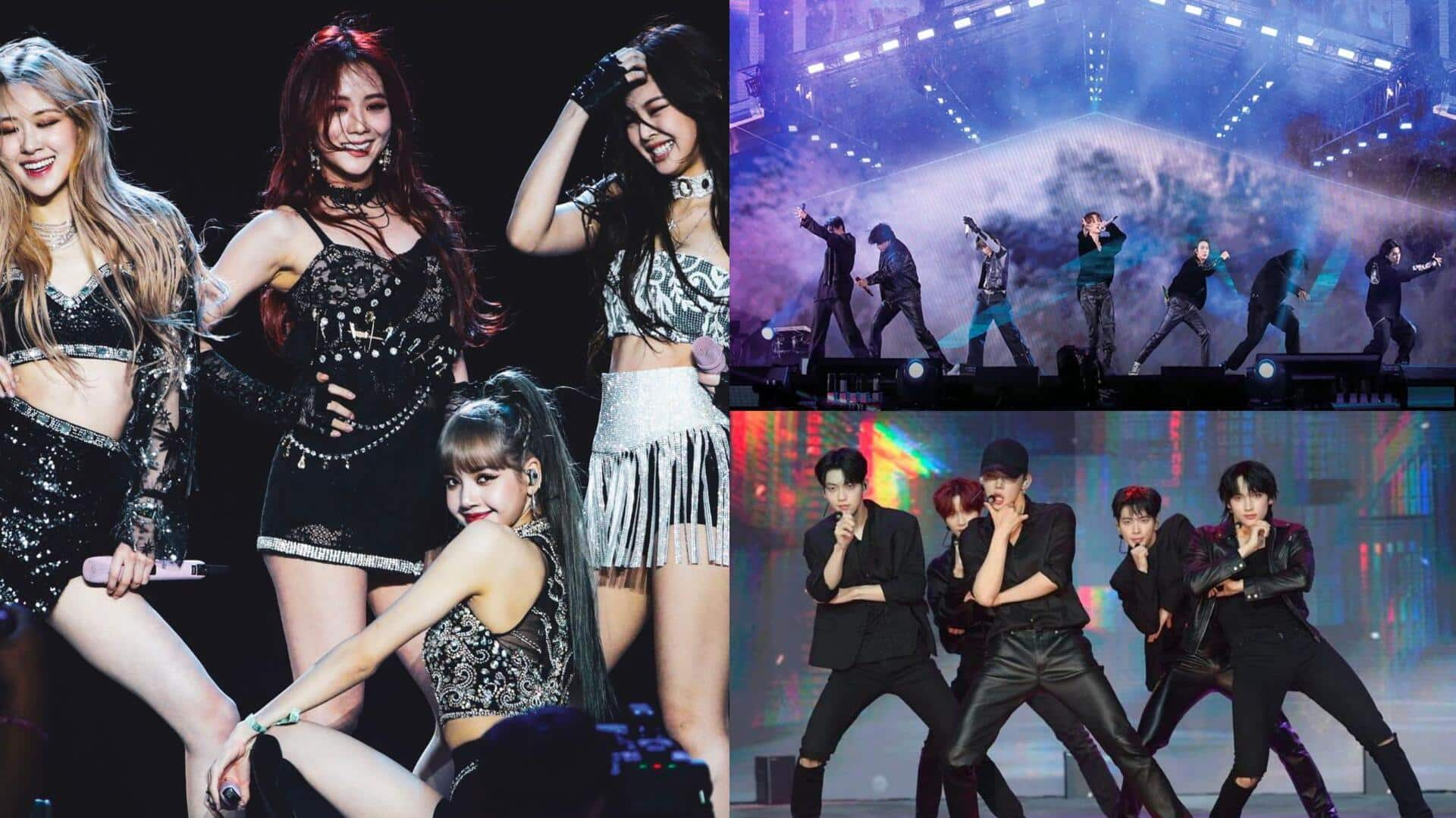
Explainer: Decoding K-pop universe of fandom jargon and culture
What's the story
Step into the mesmerizing world of K-pop, where the beats are as electrifying as the fandom culture. Ever wondered what "fanchants," "stans," and the mysterious world of "sasaengs" are all about? Whether you're a die-hard fan of BTS, SEVENTEEN, BLACKPINK, or Stray Kids or just stepping into the K-pop realm, this guide is your backstage pass to decode the fascinating world of K-pop terms.
Global phenomenon
But first, let's uncover how K-pop became global phenomenon
K-pop's global dominance is rooted in its irresistible mix of tunes, choreography, and a parade of charismatic South Korean stars. The genre's history is distinctly traceable to Seo Taiji and Boys—a group formed by Seo, a former member of Sinawe. Despite a rocky start on a talent show in 1992, its debut single Nan Arayo (I Know) scripted history in Korea, sparked K-pop revolution.
#1
Term #1: What is an idol?
The "Korean idol" system closely mirrors America's "Disney kid" phenomenon, where stars like Miley Cyrus and the Jonas Brothers emerged from shows. In Korea, this grooming process is industry-wide, and aspiring singers, dancers, and rappers audition as trainees from a young age. Selected individuals spend years honing their skills in various art forms, undergoing meticulous training to join an idol group and become celebrities.
#2
Term #2: How idol culture' in Korea is different
Idol culture in South Korea is often characterized by societal pressures that place tremendous mental strain on idols. Despite improvements in recent years, the industry remains challenging, marked by exploitative practices like slave contracts." Long-term, stringent agreements continue to persist. Lingering issues in idol culture involve the exploitation of women and recent scandals revealing drug abuse, sexual violence, and assault by idol group members.
#3
Term #3: What are fanchants
A distinctive aspect of K-pop performances is the enthusiastic participation of fans. Fanchants are rhythmic chants that are meticulously crafted and embraced by fanbases. They serve as a unified expression of support. Groups like SEVENTEEN and their devoted Carats (fandom) have perfected the art of fanchants. They have seamlessly incorporated all 13 members' names into brief measures to create a spirited atmosphere at concerts.
#4
Term #4: Do you know about fancams
Another K-pop term, fancams can be understood as recordings taken and shared by fans of a celebrity or public figure. Within the community, particularly on X/Twitter, fancams are a prevalent and cherished form of fan expression. Going beyond mere fan-edited videos, K-pop fancams offer an exclusive and intimate look at individual group members during performances. These audience-filmed close-ups cater to each idol's devoted sub-fandom.
#5, #6
Terms #5, #6: You should know what stan, 'sasaeng' mean!
A "stan" in K-pop is short for a stalker fan. Stans, despite their intense dedication, are generally the more benign kind of obsessive fan, occasionally needy and exuberant but mostly well-behaved. Meanwhile, a "sasaeng" takes this obsession to an alarming level. In Korea, they are often considered literal stalkers, known for seeking out personal information about idols with the intent to harass them.
#7
Term #7: Last on list is 'antis'
On the opposite end of fervent fandom lie antis. The unique concept of antis originated within the K-pop culture, where fans proudly declare themselves as anti-fans of idols they dislike. This often escalates into hostile harassment directed at both idols and their fans. Extreme cases involve violent actions, too. At the least, antis resort to insulting their least-favorite idols and groups on social media.